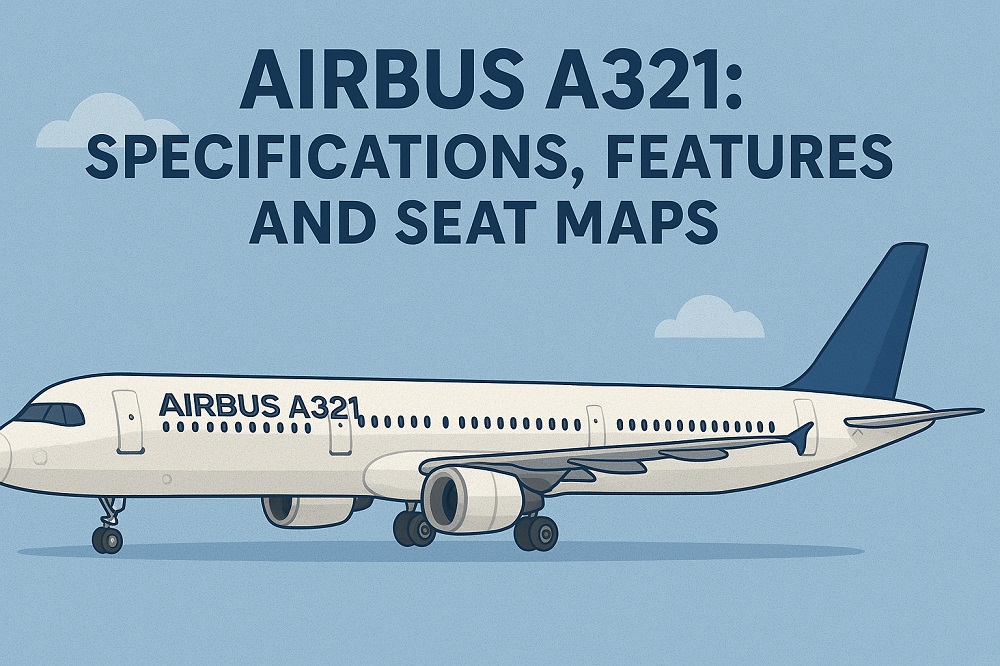Discover the remarkable evolution of commercial aviation through the Airbus A321, a game-changing narrow-body aircraft that has revolutionized short to medium-range flights. From its innovative design to cutting-edge technology, let’s explore what makes this aircraft a preferred choice for airlines worldwide.
Overview of Airbus A321
The Airbus A321, a distinguished member of the A320 family, represents a significant advancement in narrow-body jet airliners. This versatile aircraft accommodates 185-236 passengers, making it ideal for short to medium-range commercial flights. Since its maiden flight on March 11, 1993, and commercial debut with Lufthansa on January 27, 1994, the A321 has proven its worth through its shared type rating with other A320 variants, enabling seamless pilot transitions without additional training.
History and Development of Airbus A321
The A321’s journey began in the early 1990s as Airbus recognized the market demand for a larger A320 variant. The development timeline includes two significant phases:
- A321ceo (Current Engine Option) – Manufactured from 1992 to 2021
- A321neo (New Engine Option) – Introduced in 2012, first flight in February 2016
- Financial milestone – First-ever bond market entry, raising $480 million
- Additional funding – Secured from European Investment Bank and private investors
Airbus A321 Variants
The A321 family has evolved to meet diverse market needs through several key variants:
- A321ceo – The original variant optimized for short to medium-haul routes
- A321neo – Enhanced version with improved fuel efficiency and performance
- A321LR (Long Range) – Capable of operating transatlantic flights
- A321XLR (Extra Long Range) – Under development for extended range operations
Specifications of Airbus A321
The A321neo pushes the boundaries of narrow-body aircraft capabilities with impressive specifications:
| Feature | Specification |
|---|---|
| Maximum Seating | 244 passengers |
| Typical Two-Class Configuration | 180-220 passengers |
| Range | 3,500-4,000 nautical miles |
Dimensions and Capacity
A typical American Airlines A321 configuration showcases the aircraft’s versatility:
- Total capacity – 181 passengers
- First Class – 16 recliner-style seats
- Main Cabin – 165 Economy Class seats (3-3 configuration)
- Seat width – 18 inches (standard)
Performance and Range
| Performance Metric | Value |
|---|---|
| Range (A321neo) | 3,995 nautical miles (7,399 km) |
| Maximum Take-off Weight | 97 tons (213,848 lb) |
| Maximum Operating Mach | M0.82 |
| Fuel Capacity | 32,940 liters |
| Engine Thrust Range | 24,500-35,000 lbf (109-156 kN) |
Engine Options
Airlines can choose between two advanced engine options:
- CFM International LEAP 1A engine
- Pratt & Whitney PurePower PW1100G-JM engine
Both options deliver superior fuel efficiency, reduced emissions, and lower operating costs, complemented by flexible fuel configurations allowing up to three auxiliary fuel tanks for optimized range and cargo capacity.
Features of Airbus A321
The Airbus A321 exemplifies modern aviation engineering excellence with its distinctive low-wing cantilever monoplane design and retractable tricycle landing gear. Two wing pylon-mounted turbofan engines power this aircraft, delivering exceptional performance and fuel efficiency.
- Double-slotted flaps for enhanced maneuverability
- Customizable LED lighting system (A321neo)
- Redesigned sidewall panels for increased shoulder space
- Industry-leading overhead bin capacity
- Advanced wing design for improved aerodynamics
Interior Design and Comfort
The A321’s interior design sets new standards in passenger comfort within the single-aisle market. Its spacious single-aisle layout rivals wide-body jets, featuring generous legroom and competitive seat widths. The thoughtfully designed cabin creates an open, airy atmosphere that minimizes passenger confinement.
- 24 Even More® Space seats in Long Range variant
- Complimentary Pantry snack bar
- Airspace cabin with XL luggage bins
- Modern touchless lavatory features
- Enhanced cabin air filtration system
Technology and Innovations
Building on the A320’s pioneering digital fly-by-wire control system, the A321 incorporates advanced avionics that enhance safety and simplify pilot operations. The commonality across the A320 family streamlines pilot training and operational efficiency.
- Advanced digital fly-by-wire system
- ‘Cabin-Flex’ layout for optimized space utilization
- Enhanced boarding process with larger doors
- State-of-the-art engine options for reduced emissions
- Integrated avionics suite for improved pilot control
Airbus A321 Seat Maps and Configurations
The A321’s remarkable flexibility in seat configurations allows airlines to customize layouts according to their market requirements. With capacity ranging from 170 to 236 passengers and industry-leading 18-inch wide seats, the aircraft delivers superior comfort in the single-aisle market.
Typical Airline Configurations
| Class | American Airlines (321) | A321neo ACF |
|---|---|---|
| First Class | 16 recliner seats | 20 recliner seats |
| Main Cabin Extra | – | 47 seats |
| Economy | 165 seats | 129 seats |
| Total Capacity | 181 seats | 196 seats |
Comparing Seat Maps Across Airlines
| Airline | Configuration | Total Seats |
|---|---|---|
| La Compagnie | All-business class | 76 |
| British Airways | High-density layout | 220 |
| Starlux Airlines | Mixed class | 188 |
| JetBlue | Mixed class | 200 |
Read more:
- Airbus A320: Specifications, Features, and Seat Maps
- Airbus A340-300: Features, Specifications, and Performance
- Airbus Beluga: The Unique Transport Aircraft
- Airbus A340-600: Features, Specifications, and Performance
- Airbus A350: Features, Specs, and Innovations
- Airbus A319: Specifications, Seat Maps, and Features
- Airbus A321: Specifications, Features, and Seat Maps

